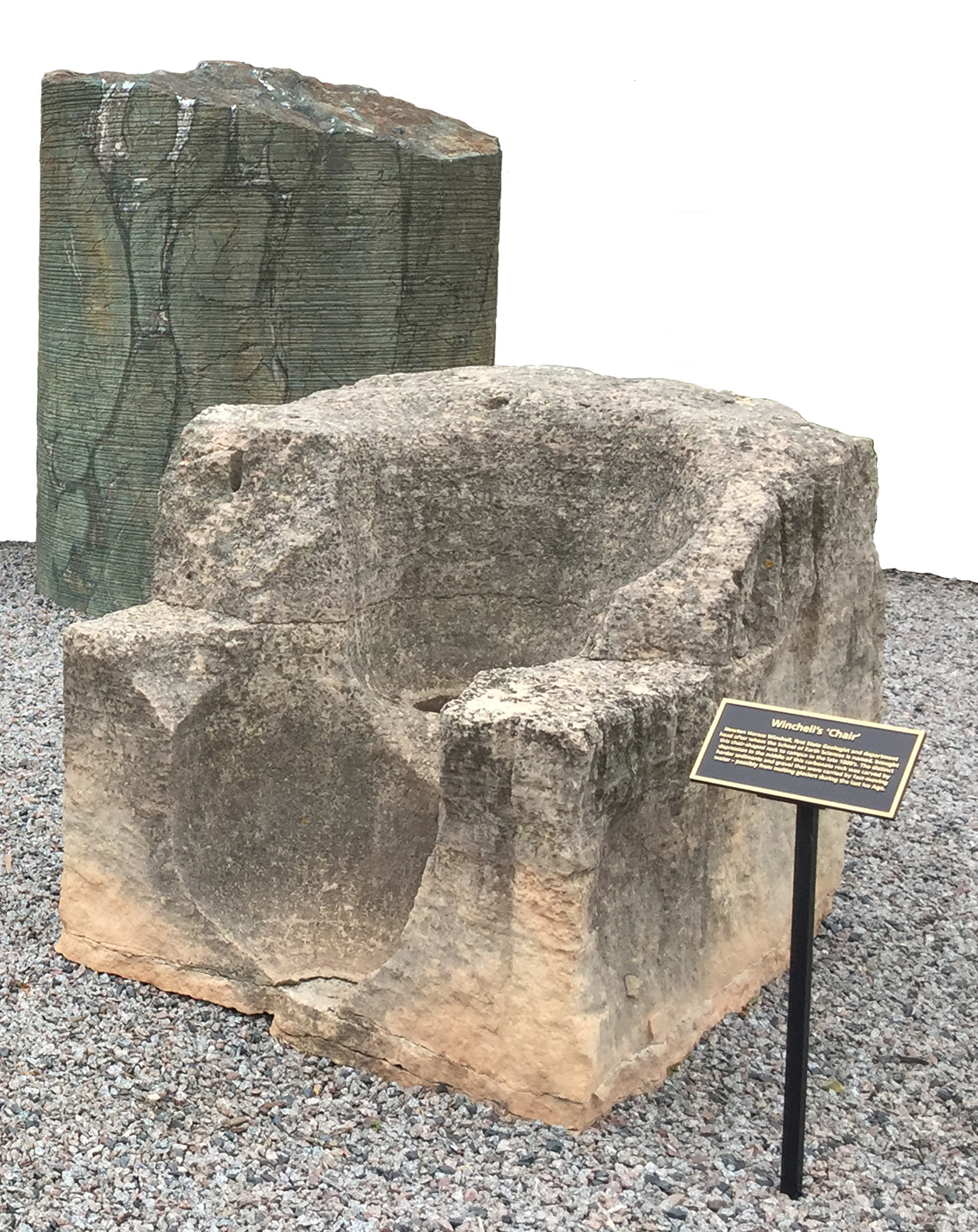
Winchell’s ‘chair’, a block of dolostone hosting two potholes, reflects a nearly half-billion-year span of Earth processes, from the breakup of an ancient supercontinent to the flow of recent meltwater-swollen streams.
Newton Winchell, founder of our School of Earth Sciences, brought this rock to campus at a time when much of the university was housed within a single building, ‘Old Main’. It has since moved with our department to Pillsbury Hall and now Tate. Although the block’s square sides were artificially cut to remove the stone from the bedrock, the flat surfaces of the chair top, and the arms (as well as the horizontal break extending back from them) are natural bedding planes. Other bedding planes can be seen towards the chair’s bottom. But the chair’s most prominent features are the circular depressions that create the chair shape which are natural potholes carved by swirling silt-laden water, most likely as a glacial meltwater stream tumbled over older marine carbonate rock. Silt and sand caught up in turbulent water eddies acted as sandpaper to erode the circular basins. Although potholes can form wherever water tumbles over bedrock, Minnesota is particularly pothole rich as the melting of ice sheets that recently covered the region released tremendous amounts of rushing meltwaters. Huge potholes, meters across and up to 18 meters deep were carved into resistant basalt bedrock at Interstate Park, only an hour’s drive northeast of campus.
The stone these potholes were carved into is carbonate rock that formed nearly 450 million years earlier at a time when Minnesota was not only close to the Equator but covered by a tropical sea. Many of the small holes in the rock’s surface formed as marine fossils were leached from the less soluble host rock. Rock layers of similar composition comprise the Mississippi River bluffs that wind through our campus. The tropical sea that covered much of southern Minnesota at the time was relatively deep water, which raises the question of how a sea could be present in this region. Minnesota was not significantly lower in the past than it is now and even if every glacier on Earth melted, the rising seas would not come close to the campus area.
The only reason why an ocean could cover Minnesota 450 million years ago is because at the time a supercontinent, older than Pangea, was breaking up and the world’s plates were moving much faster. This faster plate motion resulted in hotter, and hence higher seafloor ridges. The increased volume of seafloor ridges displaced more water up onto the land surface. As the plates reached their highest speeds, the displaced water was high enough to cover much of Minnesota, resulting in the deposition of widespread marine carbonate rock.